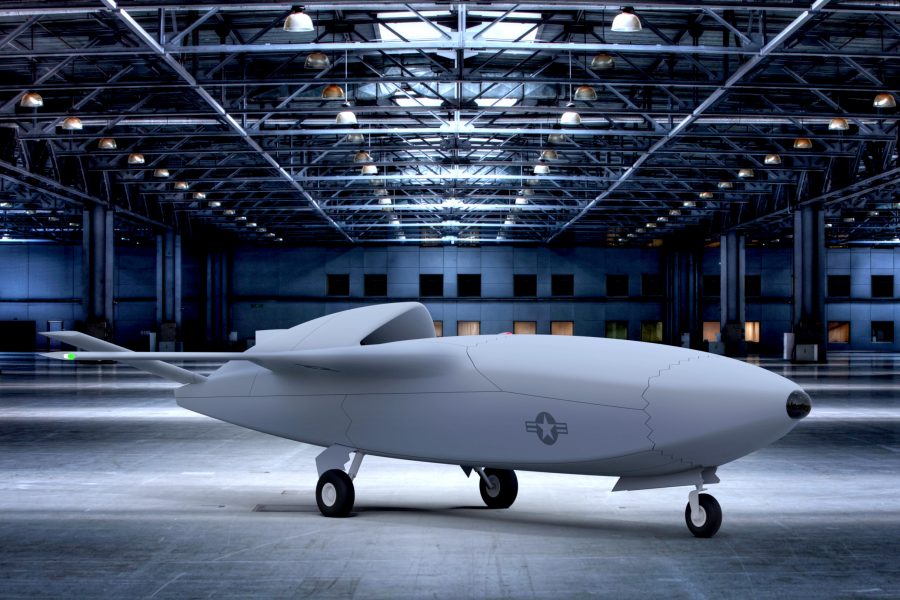Air Force officials have settled on the three programs they want to adopt as the service’s first “vanguards”: the Skyborg wingman drone, a weapon swarming project, and an experimental satellite effort, Air Force Materiel Command boss Gen. Arnold Bunch said Nov. 21.
“We believe they’re going to be game changers,” he told reporters at a Defense Writers Group breakfast. “We believe they can dramatically change the way that we fight and the way that we employ airpower.”
Bunch said Air Force leadership chose the programs earlier this fall after the Air Force Research Laboratory, Air Force Warfighting Integration Capability planning group, and Air Force Capability Development Council vetted the nominated efforts.
The idea of selecting vanguards—special programs that would pull resources from across the research and development spectrum to speed up prototyping and experimentation—came from the Air Force Science and Technology 2030 report commissioned by former Secretary Heather Wilson.
These are the winners:
SKYBORG
The Air Force envisions Skyborg as an unmanned wingman that can accompany fighter jets and potentially other aircraft into combat for missions including strike, intelligence, or as a lookout. Artificial intelligence would help the aircraft handle tasks on its own. While Kratos’ XQ-58A Valkyrie is one option that the service could use as Skyborg, AFRL Commander Maj. Gen. William Cooley told Air Force Magazine in September that other platforms could be in play.
GOLDEN HORDE
Weapons experts at Eglin AFB, Fla., are exploring how the Air Force could use autonomy to connect existing weapons in a swarm “to confuse and overwhelm our adversaries,” a service spokeswoman told Air Force Magazine in June. The weapons would be semi-autonomous, or only able to engage targets or groups of targets that a human chooses beforehand.
“Networked, collaborative, and semi-autonomous weapons will be able to observe and react to the enemy in real time, increasing their effectiveness within the enemy’s decision loop,” spokeswoman Jasmine Porterfield said on behalf of AFRL in an email. “The weapons will also be able to flexibly respond to changes in our own plans. For example, what happens in today’s fight when two formations of weapons need to combine together to maximize a strike’s effect, but one formation’s launch time is delayed? They miss each other and strike at different times. If they were collaboratively networked, the first formation could wait until the second one arrives and then strike simultaneously.”
Think of it like football, where teams can change their play if the initial one doesn’t work as intended, she said. A swarm would be sent somewhere to look for targets on its list, and told which weapons should go after which target. But if those targets don’t show up, then the swarm would change course to abort or do another mission.
Airmen would launch the weapons with strict rules of engagement that govern what they can and cannot do, and what should happen if the weapon can’t pick an acceptable option based on the situation it faces. “They will not be able to choose options that would violate the [rules of engagement],” Porterfield said.
The concept could be used for traditional airstrikes, but may be deployed for intelligence, surveillance, and reconnaissance, electronic warfare, or aerial refueling.
“Golden Horde is being used to demonstrate the kinds of capabilities enabled by collaborative autonomy and to get warfighters that might potentially use the weapons involved in the demonstrations. By doing so, they can help us develop useful concepts of operations and identify key supporting systems that must be in place for operational use,” Porterfield said. “The basic datalink and collaborative autonomous technologies used in Golden Horde can be applied to [unmanned aerial vehicles], or ground vehicles, or even underwater vehicles.”
Golden Horde is replacing a different swarming cruise missile effort known as “Gray Wolf.” Its initial flight tests are slated for summer 2020, and the Air Force is planning a capstone test event in summer 2021 that brings together various weapon systems to go after simulated targets.
NTS-3
The experimental Navigation Technology Satellite 3 initiative looks to put systems in geosynchronous orbit to provide new options for positioning, navigation, and timing services.
Each set of satellites would fix its gaze on a separate spot on earth for more consistent, comprehensive PNT coverage, instead of those that periodically look at a particular location while the Earth rotates.
Air Force Magazine previously reported that NTS-3 is expected to first reach orbit in the early 2020s. Harris Corp. is on contract to build up to nine NTS-3 satellites for the Air Force, according to SpaceNews.
NEXT STEPS
Bunch told reporters the projects are funded for the near future to ensure prototyping and experimentation can move forward.
“They’re things that we would expect, showing the right progress, that we would move into programs later on,” he said.
Earlier this year, Cooley indicated that AFRL’s Strategic Development Planning and Experimentation office could oversee the vanguards, or the service could create a new cross-cutting office.
“One of the other … important aspects of a vanguard is that we identify a [program executive officer] who will be very much involved in the acquisition strategy and decision-making for vanguards to ensure that we don’t get to the end of a vanguard program and say, “OK, now we’ve got to go start over and recompete a program and those kinds of things,” Cooley told Air Force Magazine. “So we’re trying to think ahead by dragging the PEOs into the mix early.”
